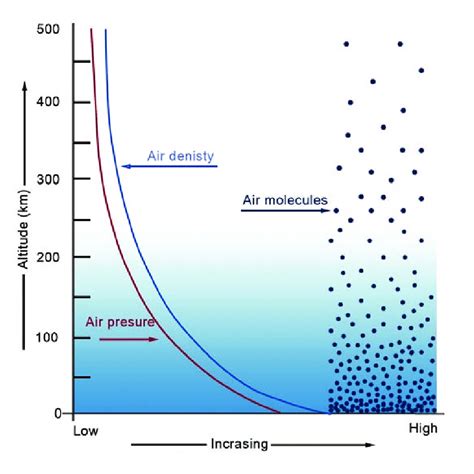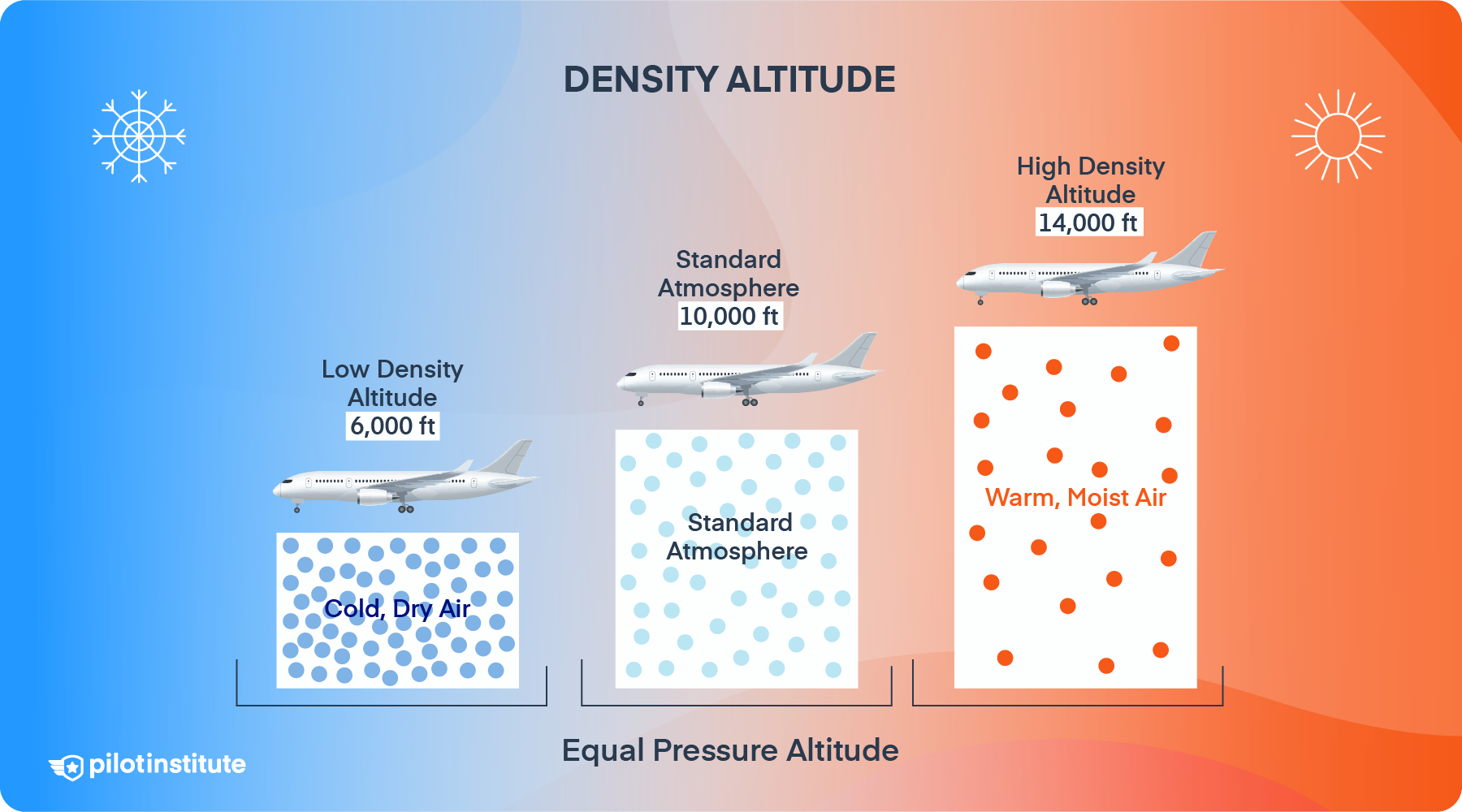Pressure Altitude: The Simple Guide

Understanding pressure altitude is crucial for aviation enthusiasts and pilots alike. It's a fundamental concept that plays a pivotal role in flight planning, navigation, and performance calculations. This guide aims to demystify pressure altitude, explaining its importance and providing practical insights for those involved in aviation.
Unraveling Pressure Altitude

Pressure altitude is a critical measure in aviation, offering insights into an aircraft’s position relative to a standard atmospheric pressure level. It’s determined by measuring the atmospheric pressure at a given altitude and adjusting it to a reference pressure, typically set at sea level. This adjustment accounts for variations in atmospheric pressure, which can significantly impact an aircraft’s performance and handling.
Unlike true altitude, which represents an aircraft's height above sea level, pressure altitude considers the atmospheric conditions an aircraft encounters during flight. It's a more dynamic measure, influenced by factors like temperature, humidity, and geographical location. As a result, pressure altitude provides a more accurate indication of an aircraft's operating environment, especially when considering factors like engine performance and aircraft systems.
Calculating Pressure Altitude
Calculating pressure altitude involves a straightforward formula: Pressure Altitude = Pressure Altitude Setting - Altitude above Field Elevation. This equation accounts for the pressure setting at the airport (typically measured in inches of mercury) and the aircraft’s altitude above the airport’s elevation. For instance, if the pressure altitude setting is 29.92 inches of mercury and the aircraft is 5,000 feet above the airport, the pressure altitude would be approximately 5,000 feet.
It's important to note that pressure altitude is a relative measure, and its accuracy relies on the precision of the pressure setting. Therefore, it's essential for pilots to ensure their altimeters are accurately set to the local pressure, which is typically provided by the control tower or obtained from a nearby weather station.
The Role of Pressure Altitude in Aviation
Pressure altitude serves as a cornerstone in aviation, guiding various aspects of flight operations. It plays a crucial role in:
- Flight Planning: Pilots use pressure altitude to determine the aircraft's performance capabilities, such as climb rate, cruise speed, and fuel consumption. It helps in selecting the optimal altitude for a specific flight, considering factors like weather conditions and aircraft efficiency.
- Navigation: Pressure altitude is integral to navigating an aircraft, especially when using VFR (Visual Flight Rules). It provides a reference point for maintaining a consistent altitude, which is crucial for safe and efficient flight operations.
- Engine Performance: Understanding pressure altitude is vital for optimizing engine performance. It helps pilots determine the engine's power output, which can vary with altitude and atmospheric pressure. This knowledge is essential for maintaining safe and efficient engine operations.
- Aircraft Systems: Many aircraft systems, such as the pressurization system and the cabin altitude indicator, rely on pressure altitude readings. These systems are designed to maintain a comfortable and safe environment for passengers and crew, ensuring their performance is aligned with the aircraft's altitude and pressure conditions.
Practical Applications and Considerations

In practical aviation scenarios, pressure altitude is a vital tool for pilots. It enables them to:
- Maintain Consistent Altitude: By referencing pressure altitude, pilots can ensure their aircraft maintains a stable altitude, even when atmospheric conditions change. This is crucial for safety, especially during critical phases of flight like takeoff and landing.
- Optimize Performance: Pressure altitude calculations help pilots select the most efficient altitude for a given flight. This optimization can lead to reduced fuel consumption, increased range, and improved overall performance, making flights more cost-effective and environmentally friendly.
- Manage Aircraft Systems: Understanding pressure altitude is key to managing aircraft systems effectively. Pilots can ensure the pressurization system and other altitude-sensitive systems are functioning optimally, enhancing passenger comfort and safety.
- Adhere to Regulations: Pressure altitude is a critical factor in complying with aviation regulations. It ensures that pilots adhere to altitude restrictions, especially in controlled airspace, minimizing the risk of collisions and ensuring safe separation between aircraft.
Advanced Concepts: Density Altitude
While pressure altitude is a fundamental concept, it’s important to acknowledge its relationship with another crucial measure: density altitude. Density altitude takes into account not only pressure but also temperature and humidity, providing an even more accurate representation of an aircraft’s operating environment.
Density altitude is particularly relevant in high-altitude or hot-and-humid conditions, where it can significantly impact aircraft performance. It's a more comprehensive measure, accounting for the effects of temperature and humidity on air density, which in turn affects an aircraft's lift, drag, and engine performance.
Understanding density altitude is crucial for pilots operating in challenging environments, as it enables them to make informed decisions about aircraft performance and safety. It's an advanced concept, but one that is essential for pilots aiming to maximize safety and efficiency in their flight operations.
Future Implications and Innovations
As aviation technology continues to evolve, the role of pressure altitude and its related concepts is set to become even more critical. With the advent of advanced avionics and flight management systems, pressure altitude measurements are becoming increasingly precise and accessible.
The integration of GPS and other positioning technologies has revolutionized the way pressure altitude is determined and utilized. Pilots now have access to real-time pressure altitude data, enabling them to make more informed decisions during flight. This evolution has not only enhanced safety but also improved the efficiency of flight operations.
Looking ahead, the future of aviation is likely to see further innovations in pressure altitude measurement and utilization. With the development of electric and hybrid aircraft, the impact of atmospheric conditions on performance will become even more pronounced. As a result, a deeper understanding of pressure altitude and its implications will be essential for the next generation of pilots and aircraft designers.
Moreover, as aviation becomes increasingly data-driven, the analysis of pressure altitude data will play a crucial role in optimizing flight paths, reducing fuel consumption, and improving overall operational efficiency. The ability to accurately measure and interpret pressure altitude will be a key differentiator for aviation professionals, enabling them to stay ahead in a rapidly evolving industry.
In Conclusion
Pressure altitude is a cornerstone concept in aviation, providing pilots and aviation enthusiasts with a crucial understanding of an aircraft’s operating environment. By grasping the principles of pressure altitude and its practical applications, one can navigate the skies with greater confidence and efficiency.
As we've explored, pressure altitude is more than just a measure of altitude; it's a dynamic indicator of atmospheric conditions, which can significantly influence an aircraft's performance and safety. With a solid grasp of this concept, pilots can make informed decisions, optimize their flights, and ensure a smooth and efficient journey.
Whether you're a seasoned pilot or an aviation enthusiast, understanding pressure altitude is a key step towards unlocking the wonders of flight. It's a concept that, once mastered, opens up a world of possibilities, from efficient flight planning to safe and comfortable navigation.
What is the significance of pressure altitude in aviation safety?
+Pressure altitude plays a crucial role in aviation safety by providing an accurate representation of an aircraft’s operating environment. It helps pilots maintain a safe altitude, especially during critical phases like takeoff and landing, and ensures compliance with altitude restrictions, minimizing the risk of collisions.
How does pressure altitude impact engine performance?
+Pressure altitude affects engine performance by influencing the power output and efficiency of the engine. At higher pressure altitudes, where the air is less dense, engines may produce less power, requiring careful management to maintain optimal performance.
Why is understanding density altitude important for pilots?
+Density altitude provides a more comprehensive understanding of an aircraft’s operating environment, taking into account temperature and humidity. It’s especially critical in high-altitude or hot-and-humid conditions, as it can significantly impact aircraft performance and safety.



